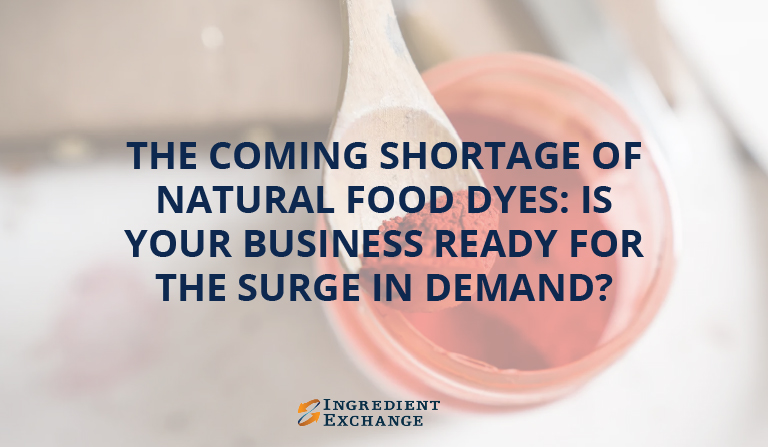The FDA’s decision to phase out petroleum-based synthetic dyes is already prompting a massive shift in ingredient sourcing. For most manufacturers, the answer seems simple: switch to plant- or mineral-derived color sources. But a closer look at today’s supply chain reveals a major challenge ahead—the supply of natural food dyes is unlikely to meet the surge in demand over the next several years.
Limited Supply in Today’s Market
Currently, natural colors such as beet juice, spirulina, turmeric, carrot concentrates, and annatto represent a relatively small fraction of global dye production. Synthetic dyes have historically dominated the market due to their low cost, vibrant hue, and consistency. As the transition accelerates, these natural sources will need to scale up quickly to meet a much larger demand—something experts believe will take years to achieve.
Why a Shortage is Likely
A range of supply chain and agricultural factors are creating risk:
- Agricultural Constraints: Crops such as spirulina or marigolds cannot be expanded overnight. These ingredients depend on specific growing regions and climate conditions.
- Processing Challenges: Extracting natural pigments requires specialized processing facilities, which are currently limited in number.
- Price Volatility: As demand rises, prices for natural colorants will likely climb sharply. Analysts predict price spikes and competition among manufacturers for limited resources.
What Industry Analysts Are Saying
Recent insights from supply chain organizations and industry experts suggest that the market for natural food dyes will become a bottleneck. Those without strong sourcing strategies or long-term supplier agreements risk falling behind competitors when reformulation deadlines arrive.
How Manufacturers Can Prepare
To mitigate risks, leading companies are taking action now:
- Secure Long-Term Contracts: Lock in partnerships with natural color producers and distributors before market pressures tighten.
- Test Multiple Alternatives: Avoid dependence on a single source by exploring different natural color options that can achieve similar results.
- Manage Synthetic Inventories: Don’t allow synthetic dye stock to become a stranded cost. Find ways to reallocate or sell excess before phase-out deadlines.
Why Planning Matters More Than Ever
The transition to natural colors isn’t just about compliance—it’s about business continuity. Those who act early will have access to a more stable supply chain and will be able to maintain production schedules without costly interruptions.
Ingredient Exchange helps manufacturers navigate these emerging markets. Whether you need access to a natural dye supply or help finding buyers for surplus synthetic colorants, our network and expertise can give you an advantage.
To discuss strategies for securing natural food dyes—or to find a buyer for your excess supply—contact Ingredient Exchange today.
